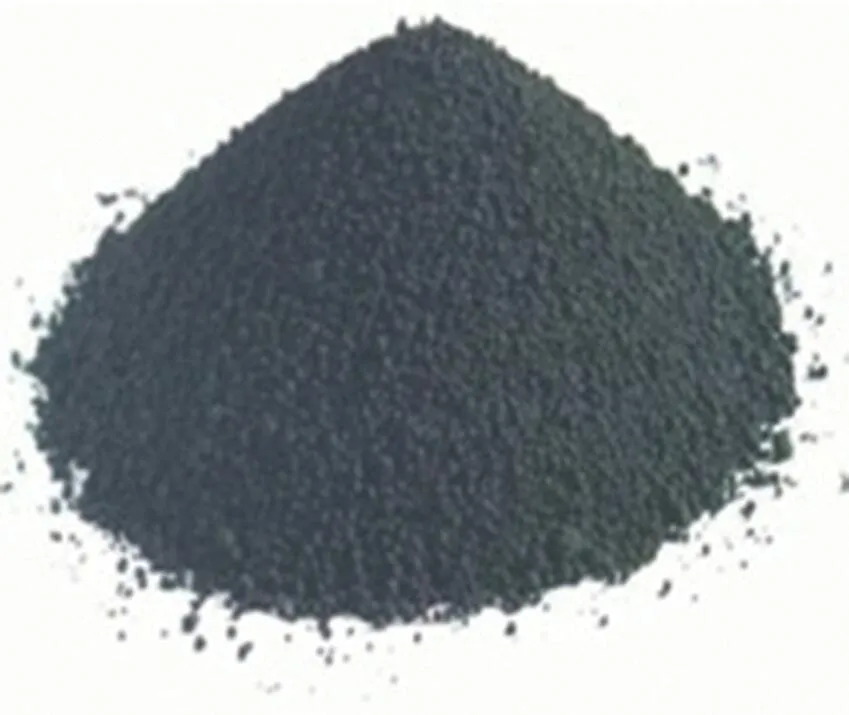
- 396 pages
- English
- ePUB (mobile friendly)
- Available on iOS & Android
eBook - ePub
Antimony
About this book
Antimony (Sb) is an exciting chemical element ubiquitously present in our daily lives. This book provides a coherent and interdisciplinary picture of our current understanding of this element. Subjects ranging from its mineralogy, mining and environmental chemistry to its potential impact in ecosystems and human health are discussed in this monograph.
Frequently asked questions
Yes, you can cancel anytime from the Subscription tab in your account settings on the Perlego website. Your subscription will stay active until the end of your current billing period. Learn how to cancel your subscription.
No, books cannot be downloaded as external files, such as PDFs, for use outside of Perlego. However, you can download books within the Perlego app for offline reading on mobile or tablet. Learn more here.
Perlego offers two plans: Essential and Complete
- Essential is ideal for learners and professionals who enjoy exploring a wide range of subjects. Access the Essential Library with 800,000+ trusted titles and best-sellers across business, personal growth, and the humanities. Includes unlimited reading time and Standard Read Aloud voice.
- Complete: Perfect for advanced learners and researchers needing full, unrestricted access. Unlock 1.4M+ books across hundreds of subjects, including academic and specialized titles. The Complete Plan also includes advanced features like Premium Read Aloud and Research Assistant.
We are an online textbook subscription service, where you can get access to an entire online library for less than the price of a single book per month. With over 1 million books across 1000+ topics, we’ve got you covered! Learn more here.
Look out for the read-aloud symbol on your next book to see if you can listen to it. The read-aloud tool reads text aloud for you, highlighting the text as it is being read. You can pause it, speed it up and slow it down. Learn more here.
Yes! You can use the Perlego app on both iOS or Android devices to read anytime, anywhere — even offline. Perfect for commutes or when you’re on the go.
Please note we cannot support devices running on iOS 13 and Android 7 or earlier. Learn more about using the app.
Please note we cannot support devices running on iOS 13 and Android 7 or earlier. Learn more about using the app.
Yes, you can access Antimony by Montserrat Filella in PDF and/or ePUB format, as well as other popular books in Ciencias físicas & Ciencia medioambiental. We have over one million books available in our catalogue for you to explore.
Information
Chapter 1 A brief history of antimony
Gary Patterson
Carnegie Mellon University, Science History Institute, 5000 Forbes Avenue, Pittsburgh, PA 15213, U.S.A, [email protected]
1.1 Introduction
Although antimony has been known for more than 10,000 years, its presence among the metals is more recent. The seven metals of antiquity included gold, silver, copper, iron, tin, lead, and mercury [1]. So where would we find antimony? The surface of the earth is filled with minerals. Silicates and carbonates are everywhere. And most elements can be found as oxides. But, there is a class of minerals that were important in antiquity: the sulfides. One of the most common is “fool’s gold” (FeS2), iron pyrites (Fig. 1.1).

Fig. 1.1: Remarkable specimen of iron pyrites (Fe(II)S2) in its cubic form (on marl, a calcium carbonate mineral) (Wikimedia Commons).
Antimony occurs most frequently as the mineral stibnite (Sb2S3) (Fig. 1.2).

Fig. 1.2: Stibnite crystals in the Hillman Hall of Minerals, Pittsburgh, PA (by permission from the Carnegie Museum of Natural History).
But, one form in which stibnite was used in antiquity was as a mascara, a black eyelash pigment. In Egypt, it was called “kohl” (Fig. 1.3).

Fig. 1.3: Black stibnite powder (Sb2S3) (by permission of Reade International).
This substance is mentioned in connection with the infamous biblical character Jezebel, in II Kings 9:30. The Greek word for eye paint (in the Septuagint) is . Stibnite powder was used throughout the Mediterranean world. It is mentioned by Pliny [2]. It was not the only black pigment used as a mascara (galena, PbS2, lead sulfide was cheaper and more abundant) [3].
Ancient chemists were fond of roasting minerals. They heated marble (CaCO3) and produced lime (CaO). They heated cinnabar (HgS) and produced liquid mercury (Hg). When they heated stibnite in air, the sulfur was replaced by oxygen to produce antimony(III) oxide, Sb2O3 (Fig. 1.4). It was used as a medicine, both orally, as a diaphoretic, and externally, as an astringent [4, 5].

Fig. 1.4: White antimony oxide (Sb2O3) (by permission of Industrial Metal Powders).
Although there is no manuscript evidence for the production of antimony metal in the Egyptian world, a remarkable glass vessel colored yellow by antimony exists in the Louvre in Paris (Fig. 1.5). It was discovered at Canosa, Italy, in 1895.

Fig. 1.5: Antimony-colored skyphos dated circa 200 BCE (Louvre Museum item MNC2200, by permission through Art Resource, NY, photographer, Herve Lewandowski).
While iron oxide (Fe2O3) can be reduced to the metal with charcoal, antimony oxide yields antimony carbonate (Sb2(CO3)3) under these conditions. However, this substance is unstable when heated and produces liquid antimony metal, and carbon dioxide and oxygen gases.
The ancient artisans would have had no clue about why this worked, but they used the process to produce cast objects. Pure antimony is very brittle, so most such objects would have broken. And there were better uses for antimony. But, the existence of the pure metal in antiquity is definitely documented.
Egypt developed a sophisticated artisanal chemical industry and produced materials remarkable for their colors and properties, even today. One of the most celebrated Egyptian chemists was named Zosimus, and a few of his reputed works exist today, as papyrus manuscripts. He practiced around 300 CE [6]. He referred to stibnite as “our lead” in one of his recipes.
Many manuscripts from the period from 800 CE to 1400 CE still exist. Antimony is mentioned in alchemical treatises, the most famous of which is The Summa perfectionis of Pseudo-Geber [7]. This thirteenth-century manuscript is a central document in the history of alchemy and has been investigated in detail by William R. Newman.
Another important manuscript from this era is the fourteenth-century work by John of Rupescissa (1300–1362), De Consideratione Quintae Essentiae. A Latin translation of a recipe for the quintessence of antimony by Hans Sloan (1660–1753) is given by McCallum [5]. The essential points are: (1) Take French stibnite and grind it fine, (2) Extract with rectified vinegar until all the red color is removed, and (3) Distill off the vinegar from the solution and collect the red residuum. It was used orally and was claimed to be very sweet. The sweetness is likely to be due to lead(II) acetate; this substance was used throughout human history to adulterate wine and to provide sweetness. French antimony ores often contained lead, such as Boulangerite (Pb3Sb2S6). They also often contained arsenic in the form of Realgar (As4S4). This soft, red, molecular solid (formed of As4S4 molecules) can be dispersed in solution and is readily powdered. Perhaps it is the source of the red color.
1.2 Antimony and the metals industry
Antimony played an important role in the invention of printing in the fifteenth century. Type metal is an alloy containing metallic antimony, along with lead and tin. The early recipes called for a mixture of stub nails and antimony sulfide, and it was thought that they were producing a special form of iron [8]. But, this recipe produces metallic antimony. The product is then mixed with molten lead, and in some cases tin. The “hardened” lead is the secret to movable type printing. The most famous book on early printing technology is Mechanick Exercises: Or, the Doctrine of Handy-Works Applied to the Art of Printing (1683, London) by Joseph Moxon (1627–1691) [9]. Even at this later date, the notion of a “special iron hardener” as the secret was presented. Joseph Moxon was a Fellow of the Royal Society and was an intimate of people like Robert Hooke.
In the sixteenth century, extensive discussions of antimony occur in books like De Re Metallica [10]. The mining community in Germany was both very active and quite prosperous. While they extracted metals from many different ores, their usual goal was to separate the gold and silver from the other metals. Antimony played a part in the purification of gold. But, now the metal needed to be obtained in pure form. A new ingredient is added to the classical mix for extracting metals from their ores: saltpeter (KNO3). The role of the saltpeter was to separate the sulfur from the stibnite as an oxidized and volatile substance. In addition, salt and vitriol were added to provide a liquefied “slag” to dissolve the unwanted salts and allow the antimony to sink to the bottom as a pure regulus. This pathway did not allow impurities like iron or lead to significantly contaminate the metallic antimony.
Another path to pure gold was to treat a gold–silver alloy (electrum) with pure stibnite. In the furnace, the silver was converted to the sulfide, and gold amalgamated with the antimony. The alloy was then roasted in a blast furnace to remove the antimony as the volatile oxide (the process is known as “cupellation”) [11].
1.3 Antimony and Basil Valentine
The seventeenth century was characterized by the alchemical use of antimony. One of the key early books was The Triumphal Chariot of Antimony (1604) attributed to the pseudonymous Basil Valentine. The recipes contained in the book form the basis for all future work on antimony. The primary goal of the work was to prepare medicines that are beneficial without being poisonous. “When Antimony is properly prepared, it is as harmless as cassia or manna” [12]. Chemistry is all about being able to change matter into a useful form. The theory of matter adopted by Valentine was a form of the alchemical mercury, sulfur, and salt notion as constituents of ...
Table of contents
- Title Page
- Copyright
- Contents
- Chapter 1 A brief history of antimony
- Chapter 2 Primary and secondary minerals of antimony
- Chapter 3 Economic geology and environmental characteristics of antimony deposits
- Chapter 4 Review of the anthropogenic flows and stocks of antimony
- Chapter 5 Antimony in China
- Chapter 6 Diffuse soil contamination by antimony
- Chapter 7 Antimony soil–plant transfer
- Chapter 8 Shooting range contamination: antimony occurrence, transport, and fate
- Chapter 9 From headwaters to oceans: antimony across the aquatic continuum
- Chapter 10 Radioactive antimony: known emissions and environmental dispersion
- Chapter 11 Biomethylation and biovolatilization of antimony
- Chapter 12 Molecular mechanisms of antimony transport and detoxification
- Chapter 13 Pentavalent antimonials in the treatment of human leishmaniasis
- Chapter 14 Ecotoxicity of antimony
- Chapter 15 Antimony: human exposure
- Chapter 16 Legislating antimony and its compounds
- Index